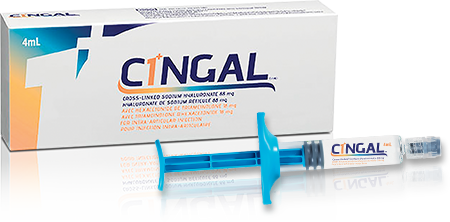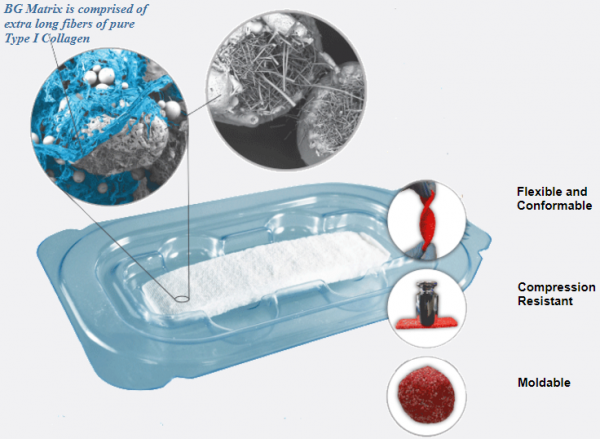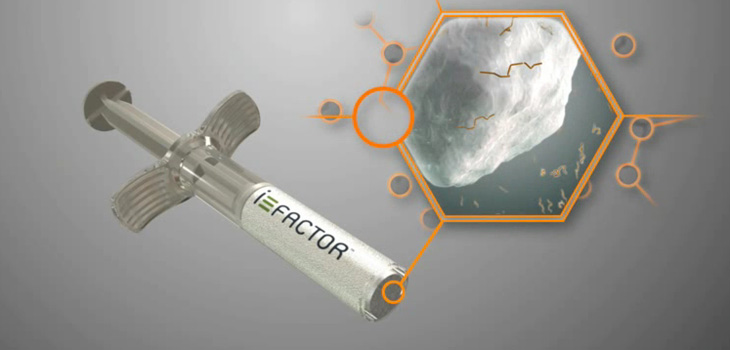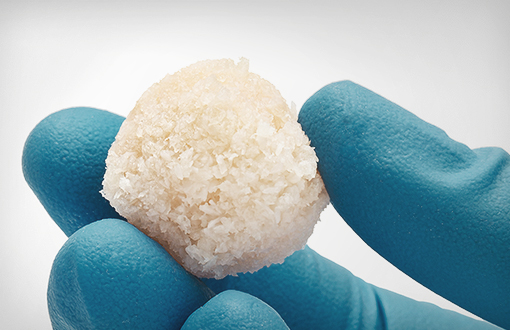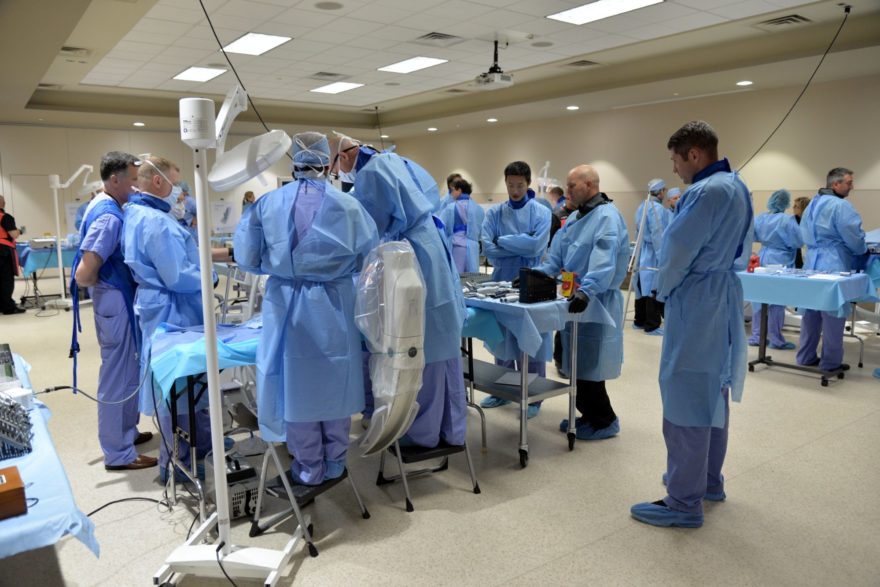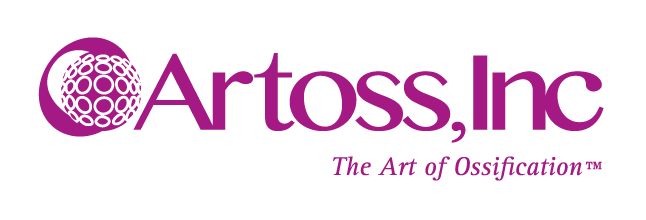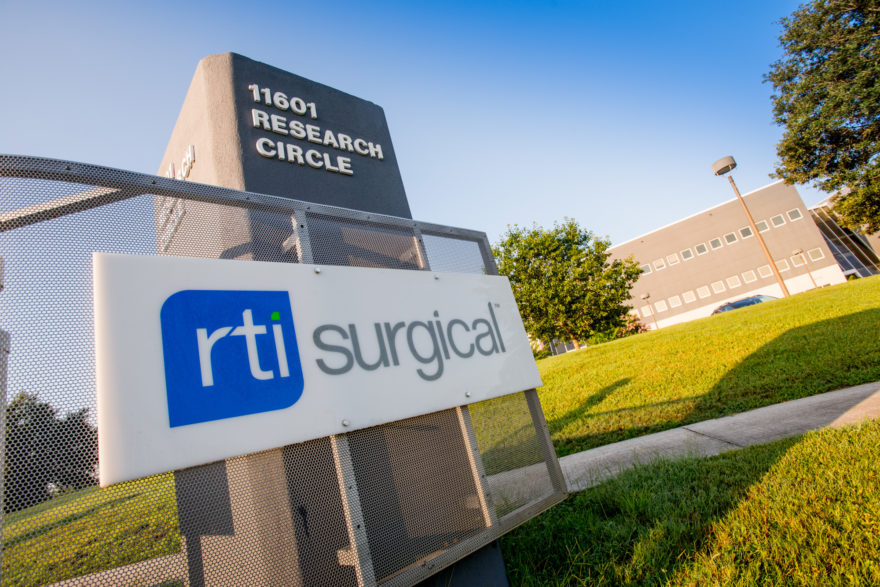October 25, 2017
BEDFORD, Mass.–(BUSINESS WIRE)–Anika Therapeutics, Inc. (NASDAQ: ANIK), a global, integrated orthopedics medicines company specializing in therapeutics based on its proprietary hyaluronic acid (“HA”) technology, today announced the completion of enrollment in its second pivotal Phase III trial evaluating CINGAL®, its novel HA-corticosteroid combination viscosupplement1 for the treatment of symptoms associated with osteoarthritis (“OA”) of the knee.
CINGAL is poised to be the first and only viscosupplement in the U.S. market to combine triamcinolone hexacetonide, a well-established, FDA-approved steroid utilized to treat inflammation, with Anika’s proprietary cross-linked, non-animal-derived hyaluronic acid, which is the active ingredient in the company’s global market-leading viscosupplements, ORTHOVISC® and MONOVISC®. The second pivotal Phase III trial, which will evaluate 576 patients with mild to moderate knee osteoarthritis, is designed to evaluate the safety of CINGAL as well as its effectiveness in improving pain, function, and quality of life measures over a 26-week period, in comparison to MONOVISC and triamcinolone hexacetonide.
“We’re proud to have rapidly achieved this major milestone on the path to seeking U.S. regulatory approval for CINGAL, which is key to driving future growth for the company and adding to our market leadership position in orthobiologics,” said Charles H. Sherwood, Ph.D., Chief Executive Officer of Anika Therapeutics. “With its novel and proprietary combination of two proven treatments, and its demonstrated ability to provide immediate and long-lasting pain relief, CINGAL will bridge a significant gap in the non-invasive, non-opioid osteoarthritis treatment landscape, which has not seen a major innovation for over a decade.”
Anika recently published results from its initial Phase III trial, which formed the basis for CINGAL’s Health Canada and CE Mark approvals in November 2015 and March 2016, respectively. The trial, which compared the safety and efficacy of CINGAL to MONOVISC and placebo (saline), showed that CINGAL provided superior short term pain relief after injection as compared to HA alone, and superior relief from OA-related pain, stiffness, and function through 26 weeks as compared to placebo (saline).
Anika expects to complete the CINGAL second pivotal Phase III trial in the first half of 2018 and anticipates FDA approval the following year.
About Anika Therapeutics, Inc.
Anika Therapeutics, Inc. (NASDAQ: ANIK) is a global, integrated orthopedic medicines company based in Bedford, Massachusetts. Anika is committed to improving the lives of patients with degenerative orthopedic diseases and traumatic conditions with clinically meaningful therapies along the continuum of care, from palliative pain management to regenerative cartilage repair. The Company has over two decades of global expertise developing, manufacturing, and commercializing more than 20 products based on its proprietary hyaluronic acid (HA) technology. Anika’s orthopedic medicine portfolio includes ORTHOVISC, MONOVISC, and CINGAL, which alleviate pain and restore joint function by replenishing depleted HA, and HYALOFAST®, a solid HA-based scaffold to aid cartilage repair and regeneration. For more information about Anika, please visit www.anikatherapeutics.com.
Forward-Looking Statements
The statements made in the first sentences of the second, third, and fifth paragraphs of this press release, which are not statements of historical fact, are forward-looking statements within the meaning of Section 27A of the Securities Act of 1933, as amended, and Section 21E of the Securities Exchange Act of 1934, as amended. These statements include, but are not limited to, those relating to driving the Company’s future growth and the Company’s expectations regarding completion of the second pivotal Phase III study for CINGAL and FDA approval of CINGAL. These statements are based upon the current beliefs and expectations of the Company’s management and are subject to significant risks, uncertainties, and other factors. The Company’s actual results could differ materially from any anticipated future results, performance, or achievements described in the forward-looking statements as a result of a number of factors including, but not limited to, (i) the Company’s ability to successfully commence and/or complete clinical trials of its products on a timely basis or at all; (ii) the Company’s ability to obtain pre-clinical or clinical data to support domestic and international pre-market approval applications, 510(k) applications, or new drug applications, or to timely file and receive FDA or other regulatory approvals or clearances of its products; (iii) that such approvals will not be obtained in a timely manner or without the need for additional clinical trials, other testing or regulatory submissions, as applicable; (iv) the Company’s research and product development efforts and their relative success, including whether we have any meaningful sales of any new products resulting from such efforts; (v) the cost effectiveness and efficiency of the Company’s clinical studies, manufacturing operations, and production planning; (vi) the strength of the economies in which the Company operates or will be operating, as well as the political stability of any of those geographic areas; (vii) future determinations by the Company to allocate resources to products and in directions not presently contemplated; (viii) the Company’s ability to successfully commercialize its products, in the U.S. and abroad; (ix) the Company’s ability to provide an adequate and timely supply of its products to its customers; and (x) the Company’s ability to achieve its growth targets. Additional factors and risks are described in the Company’s periodic reports filed with the Securities and Exchange Commission, and they are available on the SEC’s website at www.sec.gov. Forward-looking statements are made based on information available to the Company on the date of this press release, and the Company assumes no obligation to update the information contained in this press release.
1 Viscosupplements are injected by a licensed medical professional into synovial joints to replenish the natural cushioning within joints that depletes with age and degenerative orthopedic diseases, causing pain.
Contacts
For Investor Inquiries:
Anika Therapeutics, Inc.
Sylvia Cheung, 781-457-9000
Chief Financial Officer
or
For Media Inquiries:
Pure Communications
Sonal Vasudev, 917-523-1418
sonal@purecommunicationsinc.com

